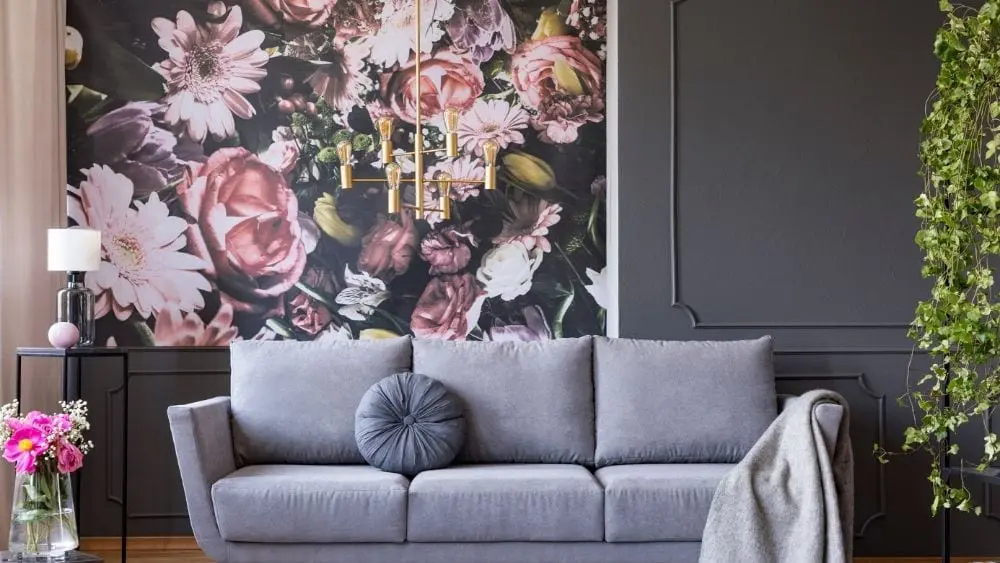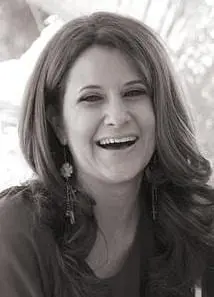
“This sure isn’t my grandmother’s wallpaper,” my friend, Betty, joked recently as she held up an article in House Beautiful magazine showcasing scores of gorgeous wallpaper samples.
While floral patterns in shades of burgundy and hunter green were probably on trend when Grams did her decorating, today’s versions are much more modern and come in as many styles as paint colors, if not more.
From trendy geometrics like chevron to handmade varieties that resemble fine art and everything in between, wallpaper is experiencing a bona fide renaissance in the design world — so why the fuss all of a sudden?
“People are staying put and not moving, so rather than keeping things neutral to sell, they’re more willing to show their personality,” says Nina Taylor, senior stylist at Graham & Brown, a leading wall coverings brand.
“Pinterest also has been a huge influence,” adds Elizabeth Rees, founder of Chasing Paper, a new peel-and-stick wallpaper company. “You can look at so many images of what things will look like and it’s easier to know what’s trending. You can also show off your home on social media.”
It turns out wallpaper is a much more dramatic way to express yourself that than say, paint. “It can really set a scene and transform a space,” adds Brian Kaspr, co-founder of wallpaper company Flat Vernacular. “It’s like creating a jewel box.”
Once you’ve decided to play with wallpaper, choosing the right one is easier than you think. “Trust your initial instincts,” Rees recommends. “We are drawn to particular colors and prints for a reason. We like how they make us feel.” Narrow your choices to a handful or less, then consider the following questions until you’ve met the right match for your home:
What is the Room Used For?
From trendy geometrics to handmade varieties that resemble fine art, wallpaper is experiencing a bona fide renaissance in the design world.
Most people prefer pacific patterns and quiet shades in bedrooms but embrace color in kitchens, living rooms, and entertaining spaces, where the energy is lively. Considering a room’s use will also help ensure your choice has the right amount of durability. A teenager’s room may not be the place for the more fragile paper options, but a guest bedroom probably is, for example.
For maximum durability, today’s vinyl varieties look as good as the real thing for a lot less money. These are great for both high-traffic and high-moisture areas, like steamy bathrooms and kitchens, in part because they’re easy to clean. In most cases, you just wipe and go.
What’s the Scale of the Space?
A long, vertical pattern like Fern Living’s Family Tree wallpaper looks great on high walls, but not necessarily when ceilings are low. “Busier, smaller patterns are good for walls that are broken up with a lot of windows, doors or artwork, but only if you have minimalist art,” says Kaspr.
How Bright is the Room?
A dark, busy choice might make an already small room look cramped, but if it’s a pass-through space like a hallway or foyer, it can dazzle you with a wow factor from the moment you walk in or through it.
How Much Square Footage are You Planning to Wrap?
The general rule of thumb is that oversized patterns will overpower a room, but like all good rules, this one can be broken — and often is. In fact if you have a preference for bold drama, big patterns in dark shades might be your thing. “Lighter colors and simpler prints give buoyancy to a space, whereas darker shades and more complex prints can be a focal point and add dramatic flair,” Rees says.
How Often Do You Like to Redecorate?
If the answer is anything less than every two or three years, you might want to opt for the new temporary and removable varieties that look exactly like the real thing. One of the most recent trends in wallpaper, these draw people who don’t want to commit to just one look forever because they easily peel off the wall, leaving nary a mark.
Those from Chasing Paper have plenty of texture and grain, which makes it feel like regular wallpaper, but at about $25 a roll, it’s a great deal. If you like the look of fine art, almost all of the Flat Vernacular papers are hand-printed, and everything starts out hand-drawn, but all are essentially giant stickers.
How Big of a Statement do You Want to Make?
If the idea of wallpapering still makes you nervous, try putting it on half a wall with beadboard or paint on the other half. Go for light, simple patterns, so you can warm up to the idea. Chasing Paper’s Bookworm is a clever option for a half wall with a chair rail in a library or study. It boasts hand-drawn illustrations of an actual bookshelf in black and white. When you’re ready to take a risk, try wallpapering one statement wall in a room, and go for bold pattern, scale or color. The effect can be eye-popping.
A brilliant book rack close to the window. The books are held in position by the statue of an animal.
But if you really want to get a conversation going at your next dinner party, consider removable wallpaper on surfaces other than walls, like kitchen backsplashes. Some folks use it to cover the tops of old coffee tables or to jazz up drawer fronts.
Can I Do it Myself?
The removable kind is extremely easy to apply yourself. In most cases you don’t need to put down glue — just peel and stick. For anything else, you will not regret calling a professional. Working with traditional wallpaper can be a nightmare for a rookie, and once something goes wrong, it’s hard to get the project on track without starting over. Many work for hourly fees.
Ready to Go?
Do what designers do and create a storyboard for your room first. “Cut out images you like from magazines; collect swatches of fabric, paint chips and wallpaper samples and put them together on a board to create a look,” recommends Taylor. “Hang it on the wall and live with it for a week or so, so you can take note of how colors change at different times of the day.” As you add or eliminate things, keep referring back to your storyboard.
Adds Taylor, “Once you’re happy with the mix of elements, go for it!”

Ana Connery is former content director of Parenting, Babytalk, Pregnancy Planner and Conceive magazines as well as parenting.com.
While editor in chief of Florida Travel & Life magazine from 2006-2009, she covered the state’s real estate and home design market as well as travel destinations.
She’s held senior editorial positions at some of the country’s most celebrated magazines, including Latina, Fitness and Cooking Light, where she oversaw the brand’s “FitHouse” show home.
Ana’s expertise is frequently sought after for appearances on “The Today Show,” “Good Morning America” and CNN. She has interviewed the country’s top experts in a variety of fields, including U.S. Secretary of Education Arne Duncan and First Lady Michelle Obama.
 California Rooms are the New Florida Rooms
California Rooms are the New Florida Rooms